Nestled on the eastern coast of South Korea, Sokcho is a vibrant city that offers a harmonious blend of natural beauty, cultural richness, and modern attractions. Whether you're a nature enthusiast or a history buff, Sokcho has something for everyone, especially during the high season in the summer.
This hidden gem, often overshadowed by more famous destinations in Korea, offers an unparalleled travel experience that will leave you with unforgettable memories.
In this article I cover over a dozen of the best things to do in Sokcho, each of which can captivate your senses and entertain you, whether you're doing a day trip from Seoul or staying for awhile. From serene temple visits and strolls, this list is curated to help you make the most out of your visit.
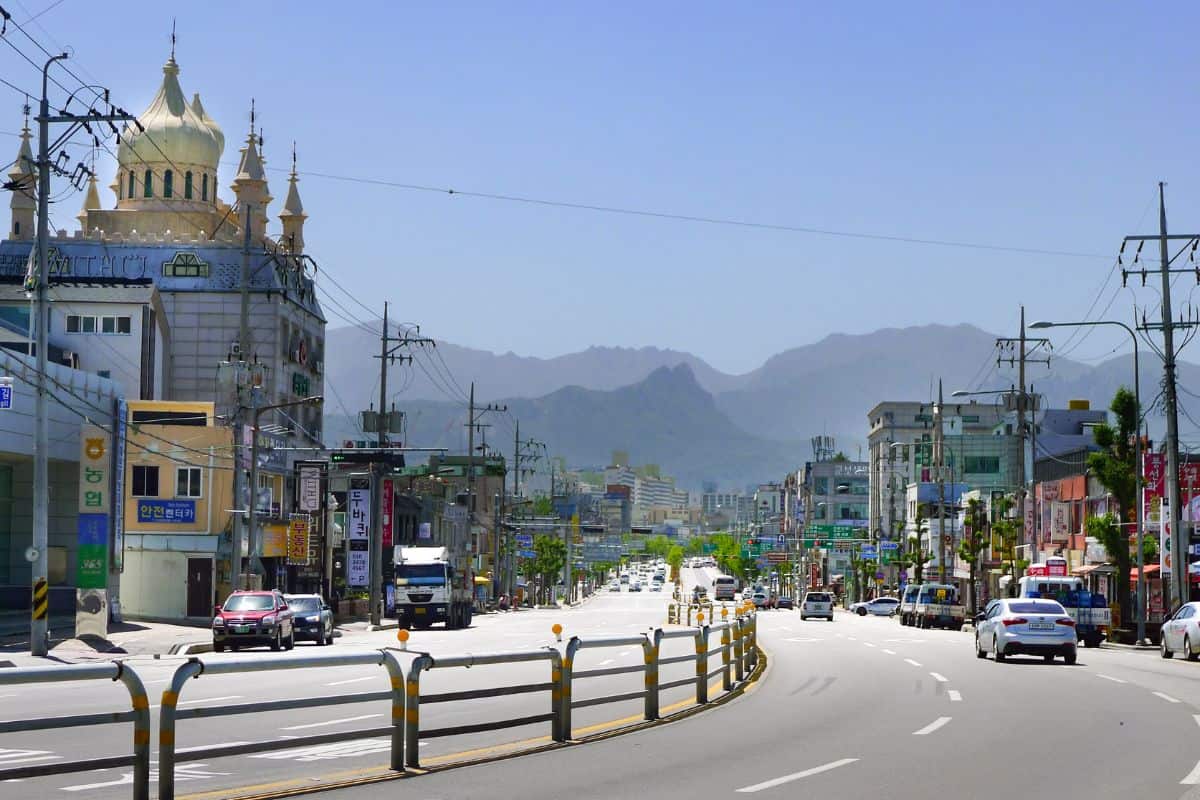
Jump to:
🏙️ History of Sokcho
Sokcho's origins as a town can be traced back to the ancient kingdom of Dongye, which flourished from the 3rd century to the early 5th century BCE. Back then, it was a quaint fishing village nestled along the shores of Lake Cheongchoho.
With time, this serene settlement morphed into a bustling port town, thanks to its strategic position on the East Sea, bound on one side by mountains. By 1937, Sokcho was recognized as a significant mineral transfer port, aiding in Korea's booming maritime trade.
However, the division of the Korean peninsula after World War II brought turmoil. Initially occupied by North Korea, Sokcho was reclaimed by South Korean forces on August 18, 1951, and has remained a part of South Korea since the Armistice Agreement in 1953.
In recent decades, Sokcho has emerged as a favored destination for travelers seeking natural beauty and cultural allure. The city's charm lies not just in its landscapes but also in its vibrant history and modern attractions.
The Gangwon International Tourism Expo, held in 1999, put Sokcho on the map for global tourists. Visitors today are drawn by its picturesque scenery, gorgeous beaches, historical sites, and mouth-watering local cuisine.
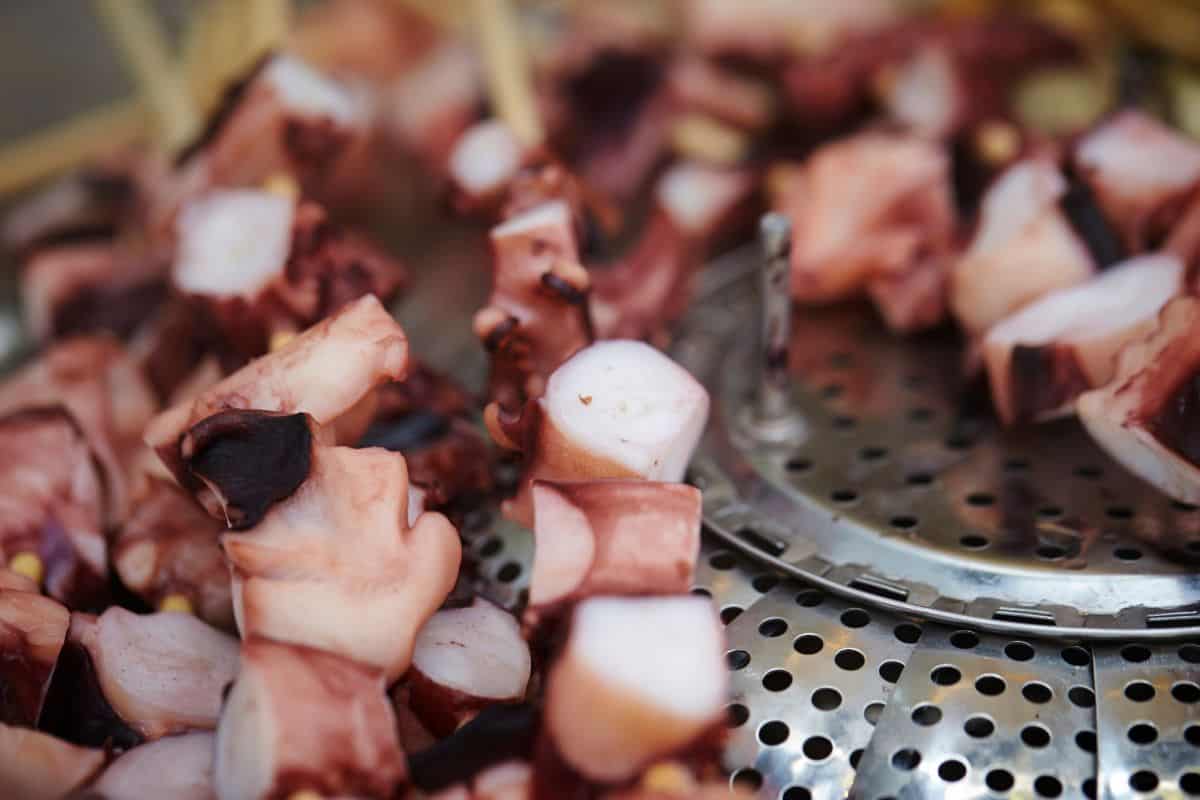
🚏 How to Get to Sokcho
To Sokcho From Seoul
Traveling to Sokcho from Seoul is easy and relatively quick. Start at the Seoul Express Bus Terminal, accessible via metro. Take Line 2 (green line) to Gangbyeon Station. Exit #4 leads to Dong-Seoul Bus Terminal, where you can buy a bus ticket to Sokcho. The scenic ride takes roughly 2 hours and 25 minutes.
Upon arrival at Sokcho Bus Terminal, head to Mount Seoraksan National Park via local bus routes #7 and #7-1. Taxis are also available for more direct travel, with apps like KakaoTaxi making it easier.
To Sokcho From Busan
For those starting in Busan, reaching Sokcho is also convenient, albeit not that quick. Just head to the Busan Bus Terminal near Nopo subway station and catch a direct bus to Sokcho, ideally booking tickets in advance. The trip takes 4 to 5 hours and tickets can be purchased at the terminal or in advance online (apps are available in Korean only).
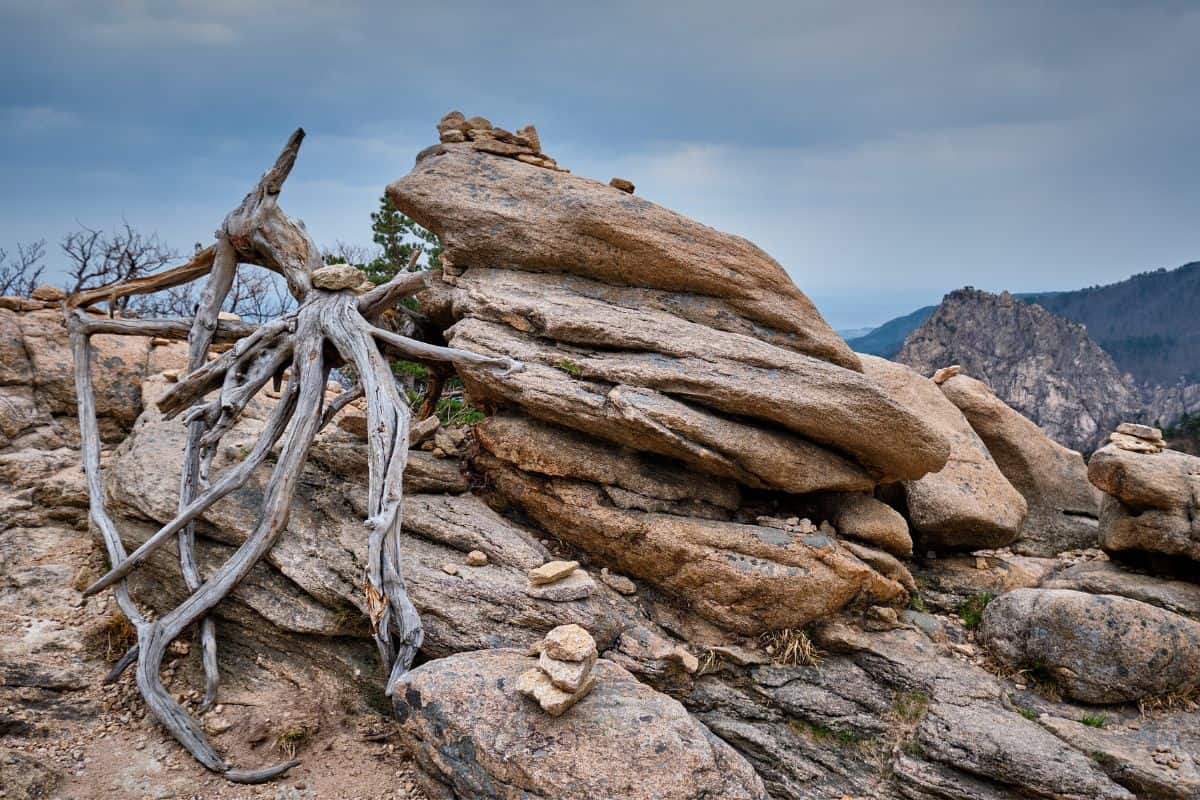
🏞️ Activities in & Around Seoraksan National Park
Hike Seoraksan National Park
Hours: 9am-6pm, Monday to Sunday
An article covering what to do in Sokcho would not be complete without mentioning Seoraksan, one of Korea's natural marvels.
Seoraksan National Park is known for its stunning views and natural beauty, making it a must-see for any visitor to Sokcho. It's Korea's first UNESCO Biosphere Reserve and is listed on the IUCN Green List for its conservation efforts. The park features dense forests, rugged rock formations, and a variety of trails for all skill levels.
The mountain is divided into Inner Seorak, South Seorak, and Outer Seorak, with Daecheongbong peak standing at 1,708 meters, Korea's third-highest peak. The hiking trails range from easy walks to tough climbs. The sunrise and sunset views from the summit are especially amazing, filling the sky with vibrant colors, so consider timing your hike to catch one or the other.
Address: 833, Seoraksan-ro, Sokcho-si, Gangwon-do, Seoul, South Korea
Closest Metro: Sokcho Station
Hours to Spend: whole day or 2 full days to comfortably visit the whole area
Ulsanbawi Rock (Seoraksan Park)
Hours: 6am-8pm, Monday to Sunday
Ulsanbawi Rock is a natural wonder in Seoraksan National Park. It’s known for its six peaks, each about 900 meters high, all of which spread like a natural fence. Located in the heart of Seoraksan Mountain, it draws hikers and nature lovers from all over, eager to see its stunning views and walk its challenging trails.
The hike to Ulsanbawi starts at Sogongwon Park and takes about 3 hours. The views keep improving along the way, too, showing off the area's natural beauty.
At the top you get a vast view of the mountains, valleys, and distant East Sea. Whether you're an experienced hiker or just love nature, the trek to Ulsanbawi is a must-do adventure with physical challenges and amazing sights, as well as trails easy enough for kids.
Address: Seorak-dong, Sokcho-si, Gangwon-do, South Korea
Closest Metro: Sokcho Station
Hours to Spend: 3-4 hours
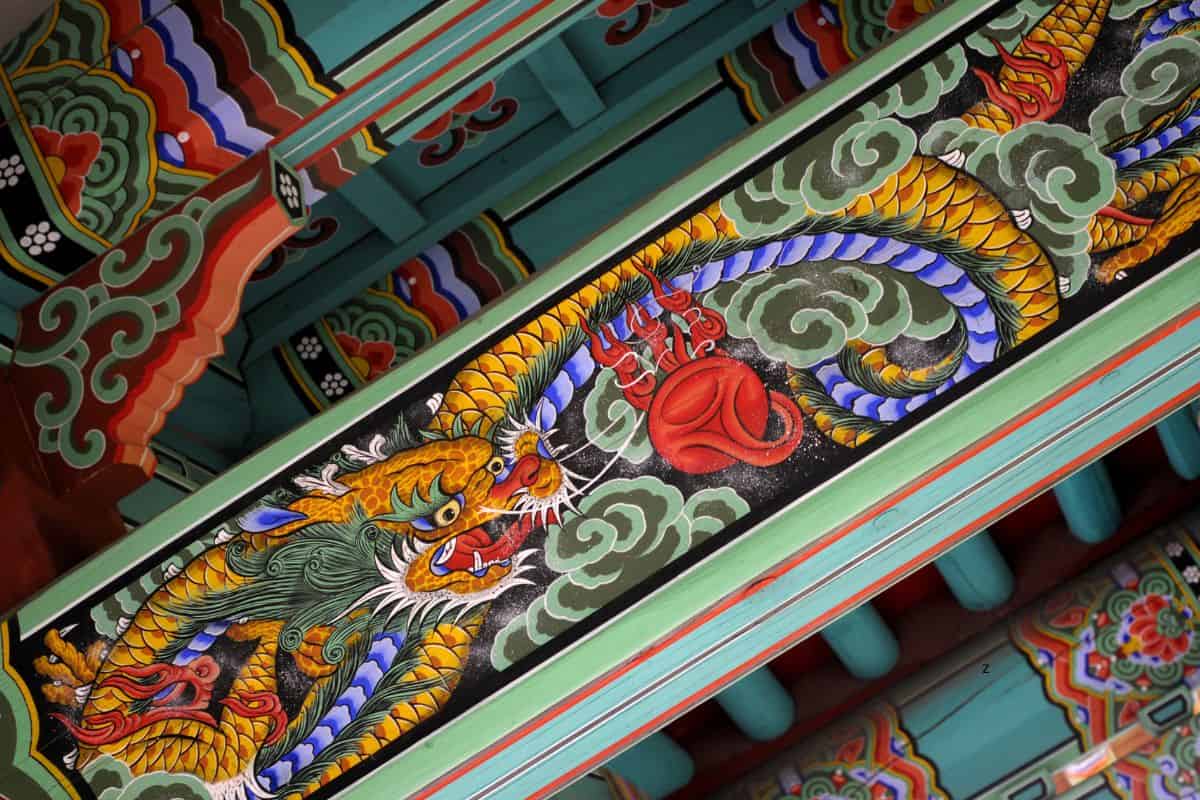
Gyejoam Temple (Seoraksan Park)
Hours: 6am-8pm, Monday to Sunday
About 30 minutes before finishing the Ulsanbawi Hike, hikers will reach the peaceful Gyejoam Temple. The temple's name literally means "inheriting the progenitor’s grotto," and early Buddhist masters set up a hermitage in a natural grotto under a big rock. This serene spot is perfect for reflection, and a must-visit for those climbing Ulsanbawi.
Gyejoam Temple is not just a scenic rest stop; it's a cultural and spiritual gem. The quiet atmosphere and stunning views offer a great break from the hike. Visitors can explore the charming grounds, chat with resident monks, and learn about the temple’s history. The visit provides both a physical break and a spiritual boost, enhancing the entire trek up Ulsanbawi.
Address: Seorak-dong, Sokcho-si, Gangwon-do, South Korea
Closest Metro: Sokcho Station
Hours to Spend: 30 minutes-1 hour
Biseondae Rock
Hours: 6am-8pm, Monday to Sunday
Nestled in the scenic Cheonbuldong Valley of Seorak Mountain, Biseondae Rock is a captivating natural wonder. This colossal rock formation, seamlessly integrated with a surrounding rocky wall, creates an enchanting atmosphere.
During rain, water cascades down the rock, forming a mesmerizing waterfall. The stream around Biseondae Rock offers views reminiscent of Manpokdong Valley in Geumgangsan Mountain. Each season unveils its unique charm—from Korean flowers in spring and summer greenery to autumn foliage and a serene winter landscape.
Biseondae Rock is steeped in legend; it’s said that a Taoist hermit named Magoseon ascended to heaven from this spot. "Biseondae" translates to "the rock where a Taoist hermit flew up to the sky," highlighting its mystical allure.
Address: Seokrasan National Park
Closest Metro: Sokcho Station
Hours to Spend: 1.5-2 hours
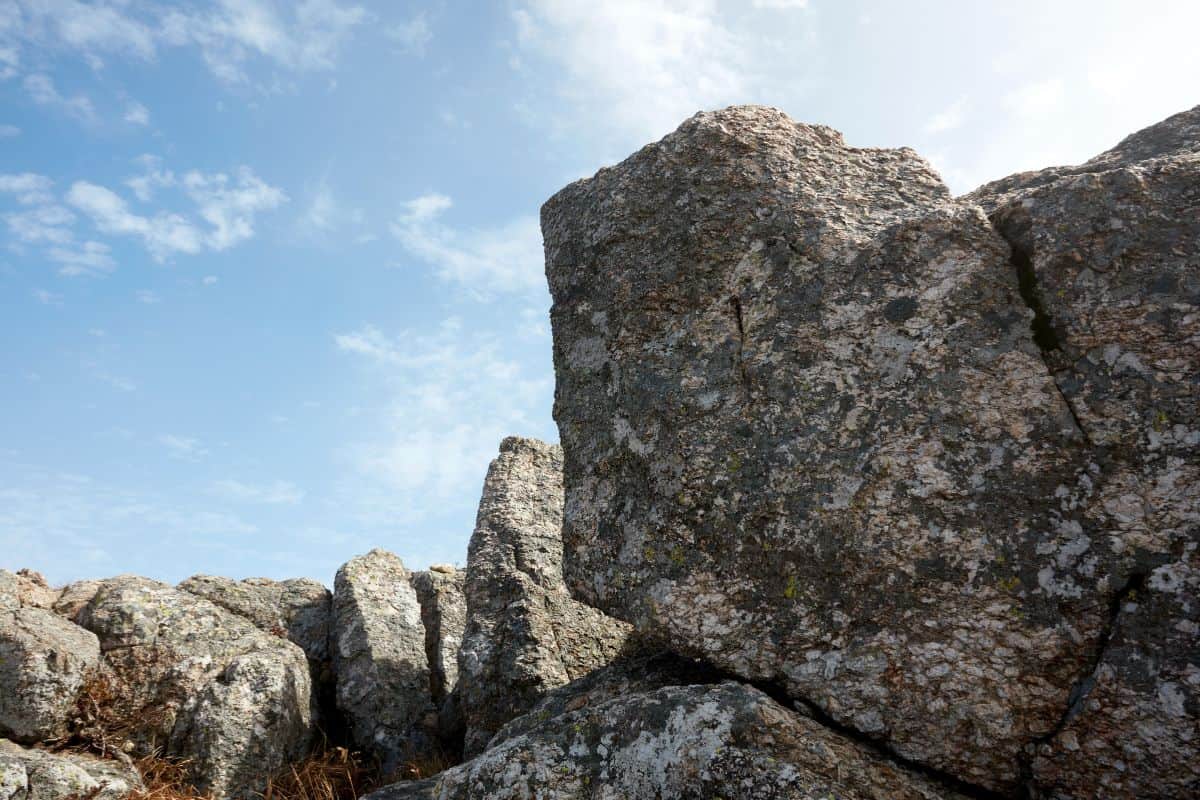
Daecheongbong Peak
Hours: 4am-12pm, winter; 3am-2pm summer
At 1,708 meters, Daecheongbong is the highest peak of Seoraksan Mountain and the third-highest in South Korea, after Hallasan and Jirisan. The Osaek course is the shortest trail for those wanting to climb Daecheongbong. Starting at Osaek, the trail takes you by Seorak Falls and up to the peak. The hike usually takes around four hours, making it a doable but rewarding trek.
The peak is home to many alpine plants, including dwarf pine, Korean rosebay, and Erman's Birch; which of them is flourishing changes with the seasons. Whether you're a seasoned climber or a casual hiker, reaching the summit offers amazing views over Seoraksan's landscape.
Address: Seorak-dong, Sokcho-si, Gangwon-do, South Korea
Closest Metro: Sokcho Station
Hours to Spend: 5-7 hours (one way)
Gwon Geum Seong Fortress
Hours: 6am-8pm, Monday to Sunday
Perched 800 meters above sea level, Gwongeumseong Fortress showcases the engineering skills of the Goryeo dynasty. Located in Seoraksan National Park, this ancient stone castle stands out as a peak from afar.
Up close, visitors see a wide stone floor and remains of old walls - to reach the fortress, you can hike or take a cable car ride; the view from the top is breathtaking. Seoraksan Mountain's rugged peaks and green forests contrast with the blue waters of the East Sea, and the effort is more than worth it, whether you're enjoying the scenery, exploring ruins, or snapping photos.
Address: Seorak-dong, Sokcho-si, Gangwon-do, South Korea
Closest Metro: Sokcho Station
Hours to Spend: 1-2 hours

Sinheungsa Temple Stay
Hours: 5am-6pm, Monday to Sunday
Located in the peaceful Seoraksan Mountain, Sinheungsa Temple is a top spot for travelers in Sokcho. This historic site, part of the Jogye Order of Korean Buddhism, was founded by monk Jajang during the Shilla dynasty in A.D. 652. The temple features notable structures like Geungnakbojeon Hall and the Three-story Stone Pagoda.
For a deeper experience, Sinheungsa Temple offers a temple stay program where visitors can escape the rush of modern life and enjoy monastic activities such as Buddhist ceremonies, prayers, 108 prostrations, and making lotus lanterns and rosaries.
This program helps visitors connect with themselves and learn about Korean Buddhist traditions. Whether spiritually inclined or just curious, Sinheungsa Temple offers a peaceful retreat and a peek into Korea's sacred heritage.
Address: 1137, Seoraksan-ro, Sokcho-si, Gangwon-do, South Korea
Closest Metro: Ganseong Intercity Bus Terminal (closest public transportation)
Hours to Spend: 1-2 hours
Biryongpokpo Falls
Hours: 4am-12pm (winter hours) and 3am-2pm (summer hours)
Just 2.4 kilometers south of the Seoraksan Small Park ticket booth, Biryongpokpo Falls is a captivating destination. Nestled between Towangseong Falls and Yukdam Falls, this 16-meter waterfall is renowned for its beauty and intriguing folklore. During winter in Sokcho, the falls transform into a spectacle of frozen columns.
Legend has it a dragon once resided here, ending a severe drought after villagers offered a maiden as a sacrifice. The clear pond below, encircled by a wooden observation deck, provides an ideal spot for contemplation and photography.
The moderate hiking trail to the falls takes about an hour from the Small Park, with a round-trip trek to Towangseong and Yukdam Falls extending 3 hours through the scenic Seoraksan Mountain.
Address: Seokrasan National Park
Closest Metro: Sokcho Station
Hours to Spend: 1-3+ hours
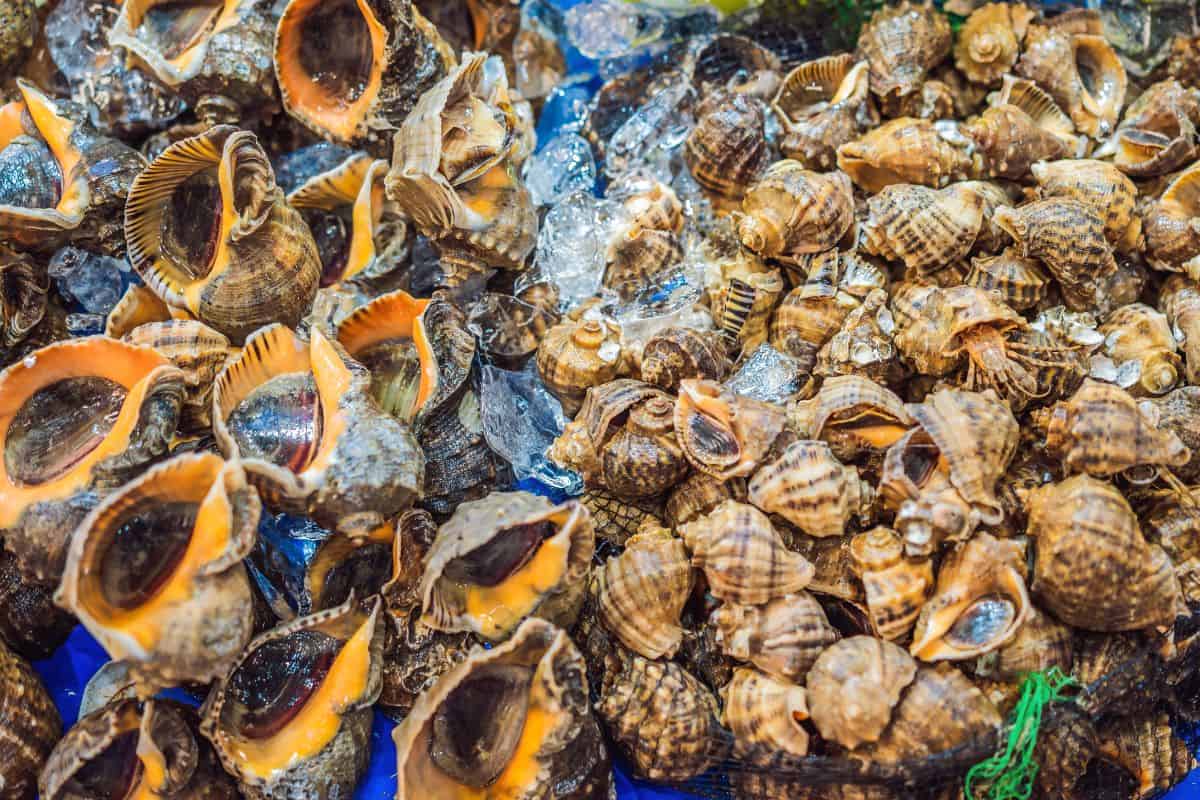
🏖️ Things to Do in Sokcho City
Sokcho Tourist and Fishery Market
Hours: 8am-12pm, Monday to Sunday
The Sokcho Tourist Fish Market is an essential tourist attraction in Sokcho, offering a diverse range of goods and experiences. The market is housed in a large, multifaceted building with a basement and two floors above ground. Within these floors, shoppers can find various stores selling clothes, daily necessities, and other general products.
One of the highlights is the Raw Fish Center, where visitors can purchase fresh live fish and seafood at reasonable prices. Beyond the main building, specialized alley stores add to the market's charm, and make it a great indoor activity in Sokcho. Each alley is dedicated to specific products like vegetables, fruits, chili peppers, blood sausages, salted seafood, and more.
Particularly notable is the Chicken Alley, famed among tourists for its various crunchy and spicy dak gangjeong (glazed fried chicken bites) stores, each offering their unique flavors. The market's layout is designed for convenience, featuring rain protection facilities and a clean, pleasant environment, as well as a wide parking lot.
Fresh agricultural and fish products, along with dried seafood items, are among the most eye-catching offerings, drawing numerous visitors eager to taste and buy local delicacies. Whether one is there to shop, eat, or simply soak in the vibrant atmosphere, the Sokcho Tourist Fish Market promises a memorable and satisfying experience.
Address: 12, Jungang-ro 147beon-gil, Sokcho-si, Gangwon-do, South Korea
Closest Metro: Sokcho Express Bus Terminal
Hours to Spend: 3-4 hours
Yeonggeumjeong Pavilion
Hours: 24 hours, 7 days a week
Yeonggeumjeong Pavilion is a must-see in Sokcho-si, right by the Sokcho Lighthouse.
Named for the way waves sound like the notes of the geomungo, a traditional Korean instrument, this coastal spot offers a unique experience. You'll hear these natural melodies as you walk along the 50-meter bridge over the rocky coastline.
At the end of the bridge, Yeonggeumjeong Pavilion offers amazing views of the East Sea. The scenery is perfect for photos, relaxing, or just enjoying the sea, whether it's the clear blue waters or dramatic storm waves.
Address: 43 Yeonggeumjeong-ro, Dongmyeong-dong, Sokcho-si, Gangwon-do, South Korea
Hours to Spend: 1-2 hours
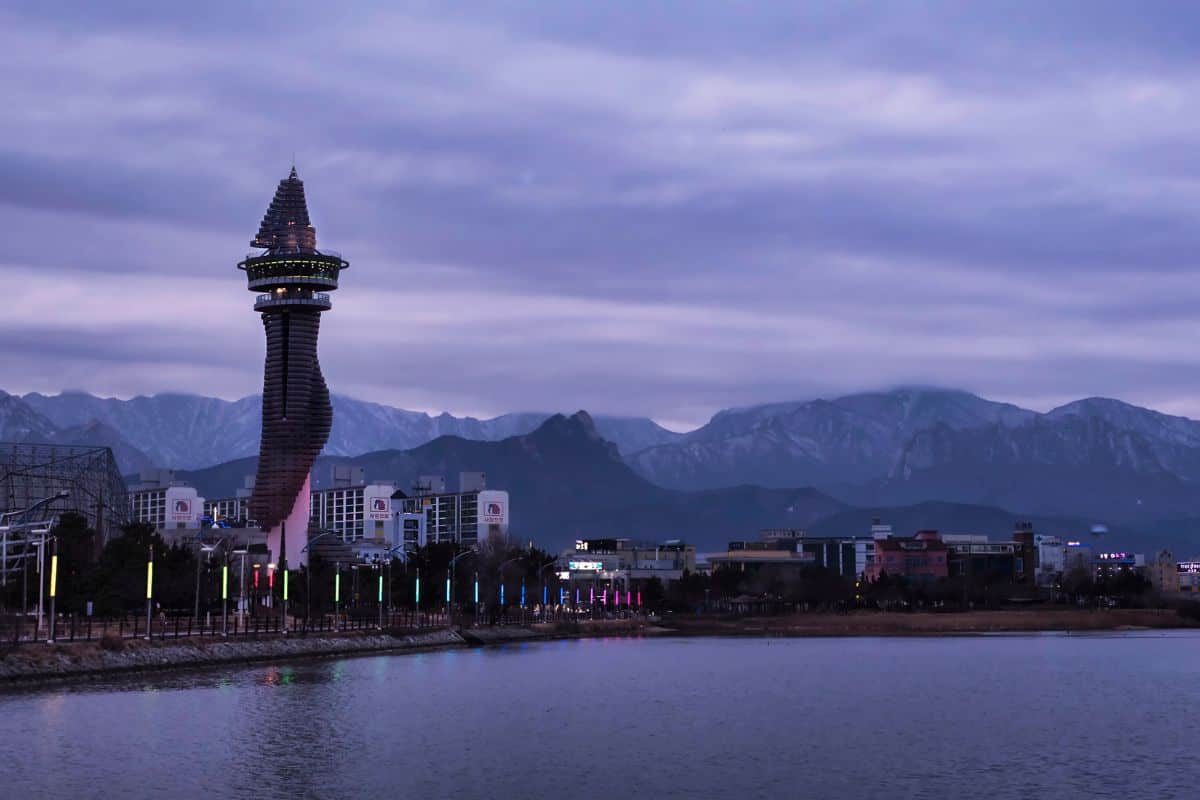
Sokcho Expo Tower
Hours: 9am-9pm (weekdays), 9am-10pm (weekends)
Situated in the picturesque area of Cheongchoho Lake, Joyang-dong, the Sokcho Expo Tower is an ideal spot for travelers looking to experience panoramic views of Sokcho. Standing at a remarkable height of 73.4 meters, this observatory tower can welcome up to 100 visitors simultaneously.
As you ascend to the observation platform, you're greeted with a breathtaking 360-degree vista encompassing Ulsanbawi Rock and Daecheongbong Peak in the majestic Seoraksan Mountain range.
The sweeping views extend to the East Sea and downtown Sokcho, offering a vivid tapestry of natural and urban landscapes that captivate any visitor's imagination. Especially enchanting during sunset, Sokcho Expo Tower provides a mesmerizing space to watch the day slowly fade into night as the sky paints itself in hues of orange, pink, and purple.
Additionally, the nearby Cheongchoho Lake is a haven for migratory birds, adding an element of serene beauty to the experience.
Address: 72 Expo-ro, Sokcho-si, Gangwon-do, South Korea
Closest Metro: Sokcho Express Bus Terminal
Hours to Spend: 2-3 hours
Cheongchoho Lake
Hours: 24 hours, 7 days a week
Cheongchoho Lake, located in the heart of Sokcho City, is a beautiful natural spot with a 5-meter circumference covering 1.3 square kilometers. The lake's clean waters come from the Misiryeong Valley of the Taebaek Mountain Range, flowing through the Cheongchocheon Stream.
Overlooking the lake is Cheongchojeong Pavilion, offering stunning views of Seorak Mountain and the East Sea. At the end of a 75-meter ocean bridge, the pavilion feels like a floating oasis.
At night, the pavillion lights up, making it one of Sokcho's top nighttime attractions. The lake's edge features dragon sculptures inspired by local tales, while visitors of all ages can enjoy a walk around the lake with plenty of benches to rest.
Cheongchoho Lake Park is home to the Seokbong Ceramic Museum, a bird sanctuary, and the 73.4-meter high Expo Tower Observatory from the International Travel Expo ’99 of Gangwon Province, offering more great views of the area.
Address: 140 Expo-ro, Sokcho-si, Gangwon-do, South Korea
Closest Metro: Sokcho Express Bus Terminal
Hours to Spend: 1-2 hours
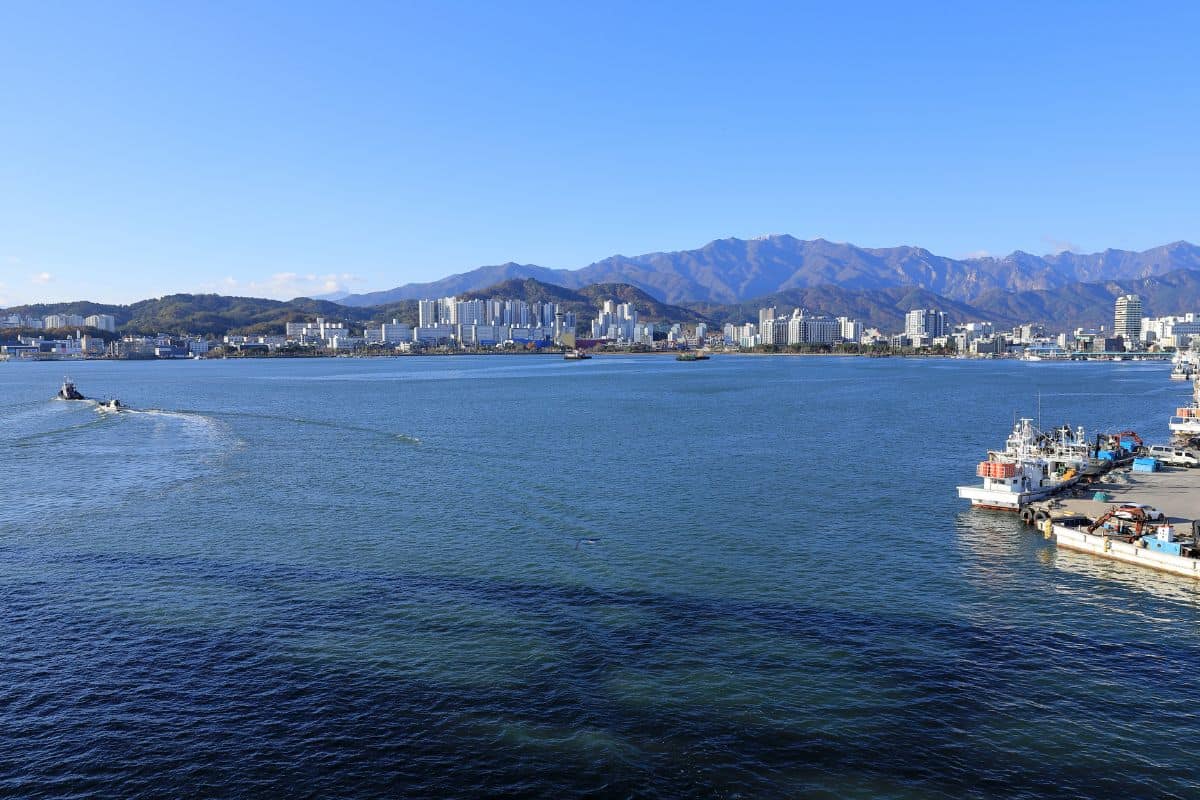
Seorak Waterpia
Hours: 10am-8:30pm, Monday to Sunday
For a blend of relaxation and excitement, Hanhwa Resort Seorak Waterpia is a must-visit destination, somewhere between a Korean spa and Seoulland Amusement Park. This theme park harmoniously combines the tranquillity of hot spring baths with the thrill of water park adventures.
Drawing from natural hot spring water, Seorak Waterpia is meticulously divided into two main zones: the spa zone and the water zone.
Whether you're looking to unwind or seek adrenaline-fueled fun, the park provides a serene escape with its soothing indoor saunas, expansive swimming pools, and a rooftop spa that offers stunning views of the surrounding landscape.
What sets Seorak Waterpia apart is its year-round accessibility and diverse range of facilities. The outdoor sauna, in particular, is a crowd favorite, allowing visitors to bask in the warm, invigorating waters regardless of the season.
As you drift between the spa and water zones, you'll find various attractions designed to cater to all ages and preferences, ensuring an enjoyable experience for families, friends, and solo travelers alike.
Address: 111 Misiryeong-ro 2983beon-gil, Sokcho-si, Gangwon-do, South Korea
Closest Metro: Sokcho Express Bus Terminal or Sokcho Intercity Bus Terminal
Hours to Spend: 2-3 hours
Abai Village
Hours: 4:30am-11pm, Monday to Sunday
Nestled in Cheongho-dong, Abai Village carries a heartwarming yet poignant history. Founded by Korean War refugees from Hamgyeong-do in North Korea, the village stands as a testament to their resilience and spirit.
The name "abai" is a Hamgyeong-do dialect for a kind old man, evoking a sense of familiarity and warmth for Korean visitors and tourists. Visiting Abai Village offers a unique peek into the lives and stories of these displaced individuals, capturing moments that history might otherwise forget.
Though the village has changed, you'll still find old shacks and charming murals expressing the residents' nostalgia for their homeland. These colorful wall paintings tell tales of hardship and endurance, depicting the villagers' struggles through fishing and manual labor.
For a deeper dive into history, the Sokcho Museum has preserved original refugee homes in its Refugee Village section, offering an authentic glimpse into the past. Abai Village is also famous for being a filming location for the beloved Korean drama Autumn in My Heart. This has added to its charm, attracting numerous visitors and making it a must-see in Sokcho.
The vibrant restaurant alley is a haven for food lovers. It has cozy cafes and eateries serving North Korean delicacies like Hamheung-style cold buckwheat noodles, stuffed squid, and sausage soup. Your visit is not just a historical journey but a delightful culinary adventure as well.
Address: 122 Cheongho-ro, Sokcho-si, Gangwon-do, South Korea
Closest Metro: Can only be accessed by ferry
Hours to Spend: 2-3 hours
Ferry Ticket Prices: Adult (₩1,000 round-trip), Student (₩600 round-trip)
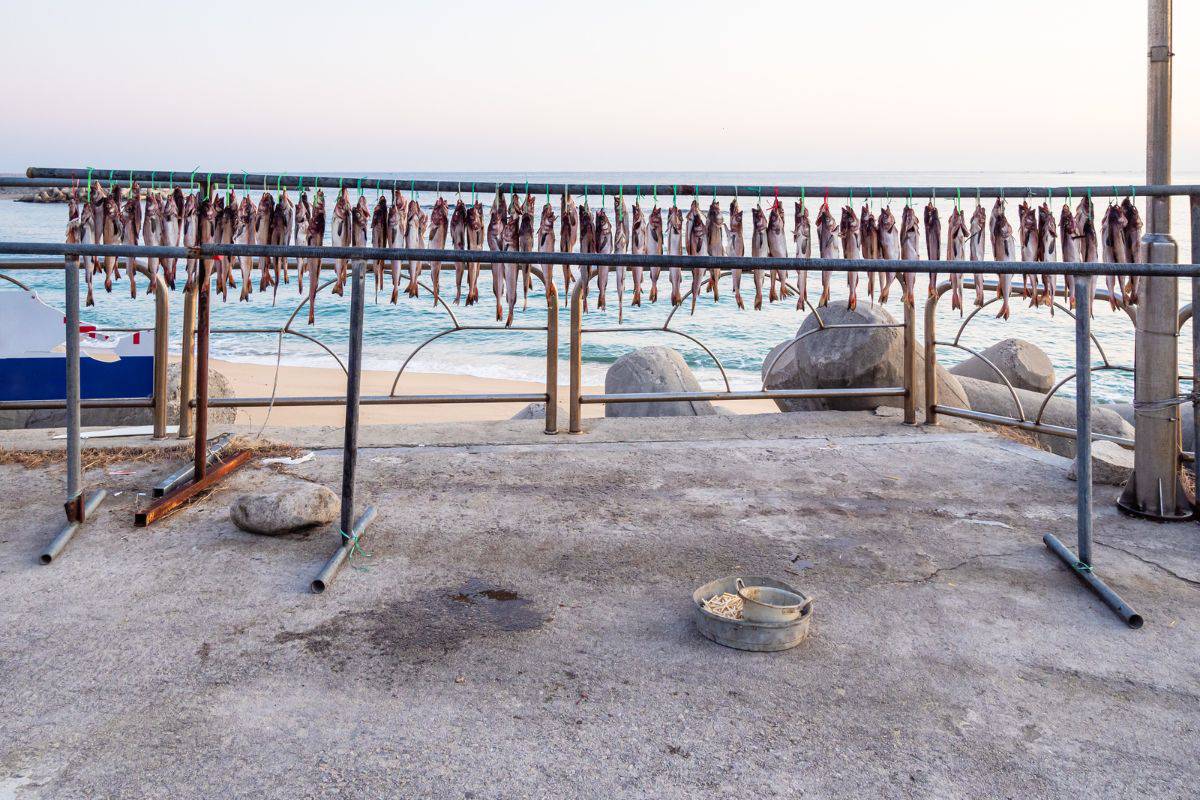
Daepohang Port
Hours: open daily with varying operating hours
Located on the southernmost tip of Sokcho, Daepohang Port is a gem for travelers seeking fresh, high-quality seafood. With the majestic Seoraksan Mountain as its backdrop, the port exudes a serene charm perfect for visitors looking to experience the local maritime culture.
While the rise of Seoraksan Mountain as a tourist destination has drawn more attention to the port, Daepohang has a rich history that predates the city of Sokcho itself. In fact, maps of Korea published shortly after the Korean War prominently featured Daepohang Port, highlighting its significance even before Sokcho became a recognized city.
Even though Daepohang Port fell into relative obscurity following the establishment of Sokcho and Sokcho Port in 1942, it remains a quaint and picturesque spot worth visiting.
A modest number of fishing boats now frequent the port, making it a peaceful haven away from the bustling activities found in larger ports. Tourists can revel in the laid-back atmosphere, enjoy the scenic views, and savor the freshest seafood, capturing a unique slice of Korean coastal life that's both tranquil and steeped in history.
Address: Daepo-dong, Sokcho-si, Gangwon-do, South Korea
Closest Metro: Sokcho Express Bus Terminal
Hours to Spend: 1-2 hours
Sokcho Beach
Hours: 24 hours, 7 days a week
Opened in 1976, Sokcho Beach is one of South Korea's best beaches, and highly regarded as the best beach in Sokcho. It's well-maintained and easy to get to, being close to downtown Sokcho and the bus terminal.
The beach's clear waters and gentle slope are great for swimming, especially for lille ones, particularly in July and August when it's most popular. Nearby restaurants and facilities provide everything needed for a fun beach day. Sokcho Beach even hosts various sculptures, a pine forest with a walking trail, and a small park.
Art installations like the Korean initials "ㅅㅊ" for Sokcho, a global compass, and a dolphin sculpture add charm. Popular photo spots include a large picture frame with the sea backdrop and the "Stairway to Heaven." Throughout the year, Sokcho Beach hosts cultural events and live performances, making it a great place to visit anytime.
Address: 186 Haeoreum-ro, Joyang-dong, Sokcho-si, Gangwon-do, South Korea
Closest Metro: Gangneung Station
Hours to Spend: 2-3 hours
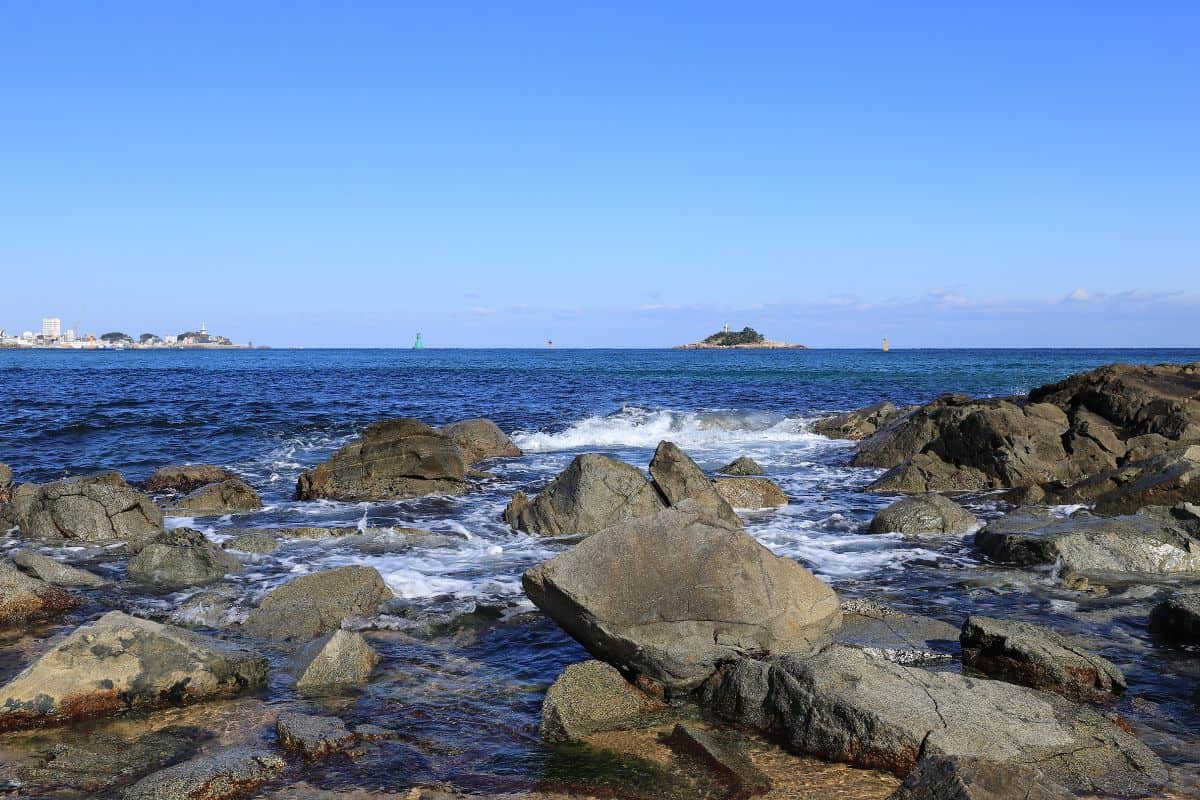
🤔 Frequently Asked Questions (FAQ)
Visitors at Sinheungsa Temple can escape modern life's rush by engaging in monastic activities such as Buddhist ceremonies, prayers, 108 prostrations, and making lotus lanterns and rosaries. These activities help participants connect with themselves and learn about Korean Buddhist traditions.
You can get to Gwongeumseong Fortress either by hiking or taking a cable car ride. Once at the top, they can enjoy breathtaking views of Seoraksan Mountain's rugged peaks, green forests, and the blue waters of the East Sea, alongside the ancient stone castle's remains.
Ulsanbawi Rock is famed for its six peaks and stunning views. Hikers should start their journey at Sogongwon Park, expect a roughly three-hour hike, and be prepared for the physical challenges and amazing sights along the way, including panoramic views of mountains, valleys, and the distant sea.
Cheongchoho Lake offers clean waters, scenic views, and a variety of nearby attractions like the Seokbong Ceramic Museum, a bird sanctuary, and the Expo Tower Observatory. Visitors can enjoy walking, resting on benches around the lake, and watching the pavilion light up at night for a spectacular experience.

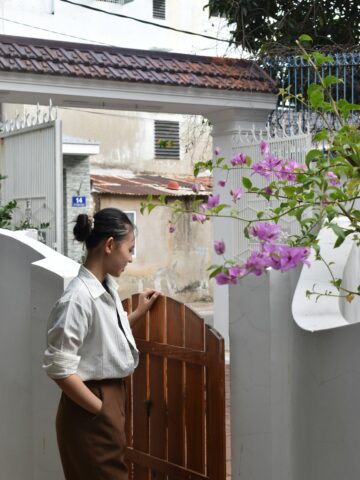
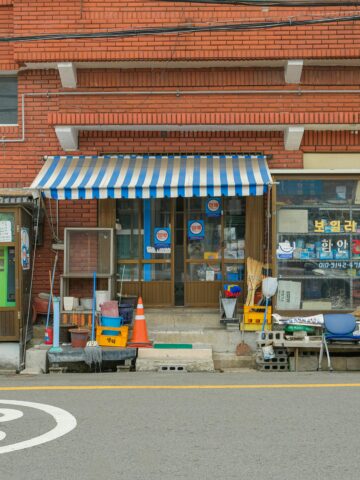
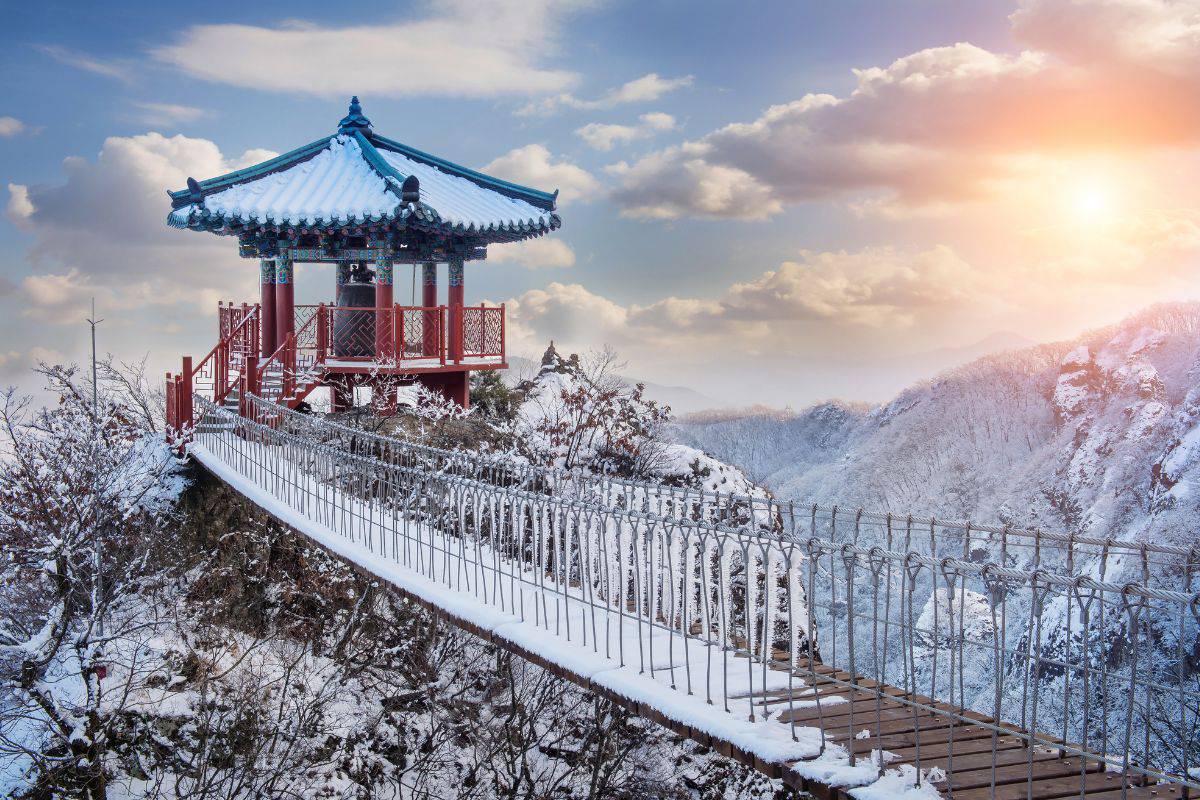
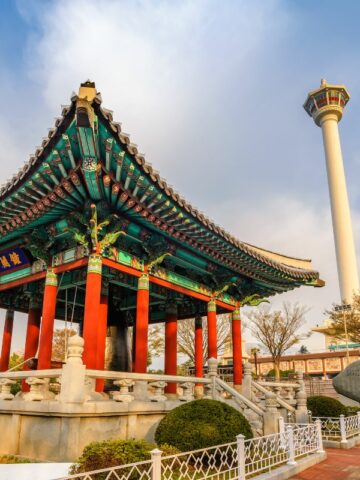
Comments
No Comments